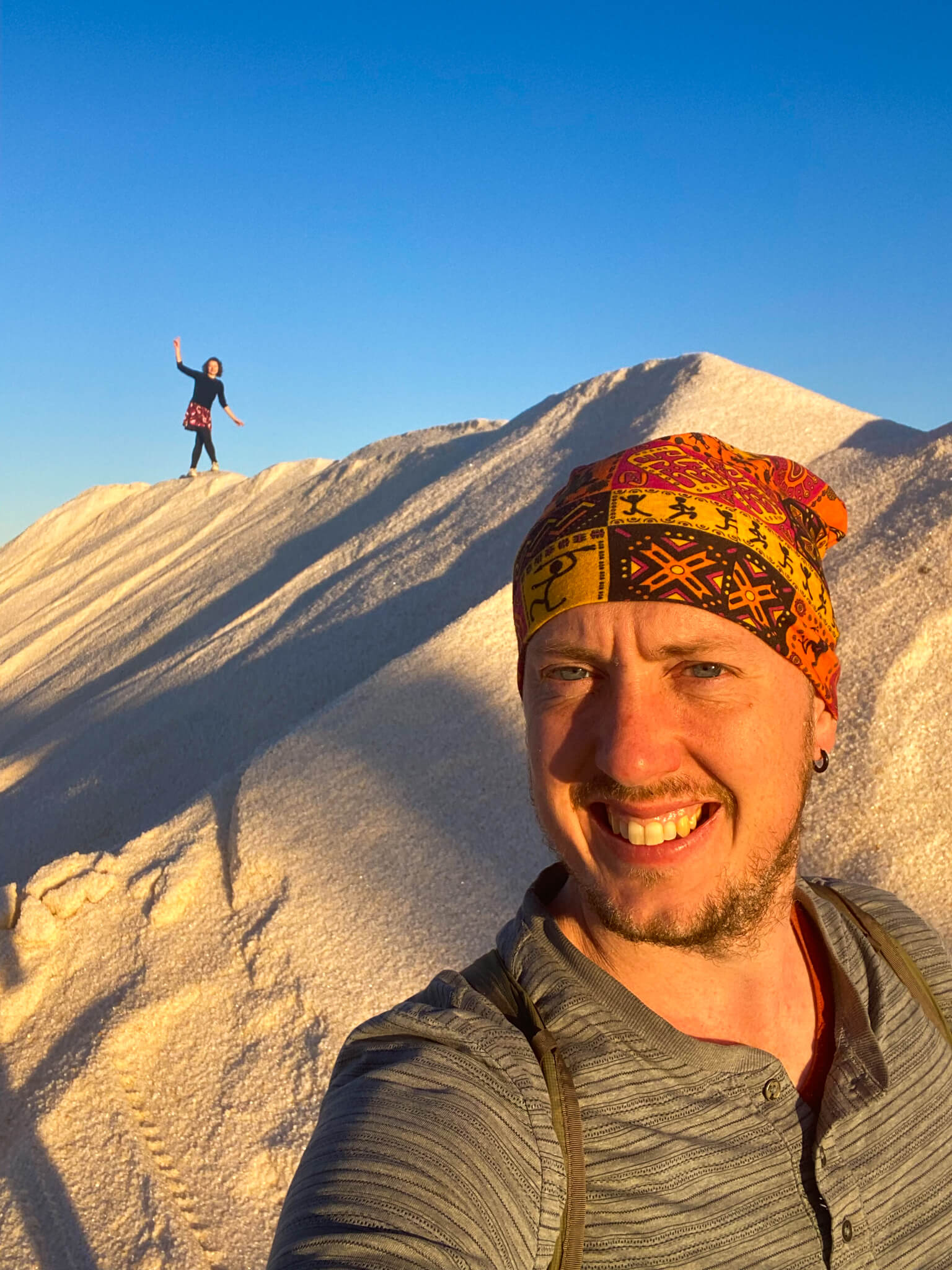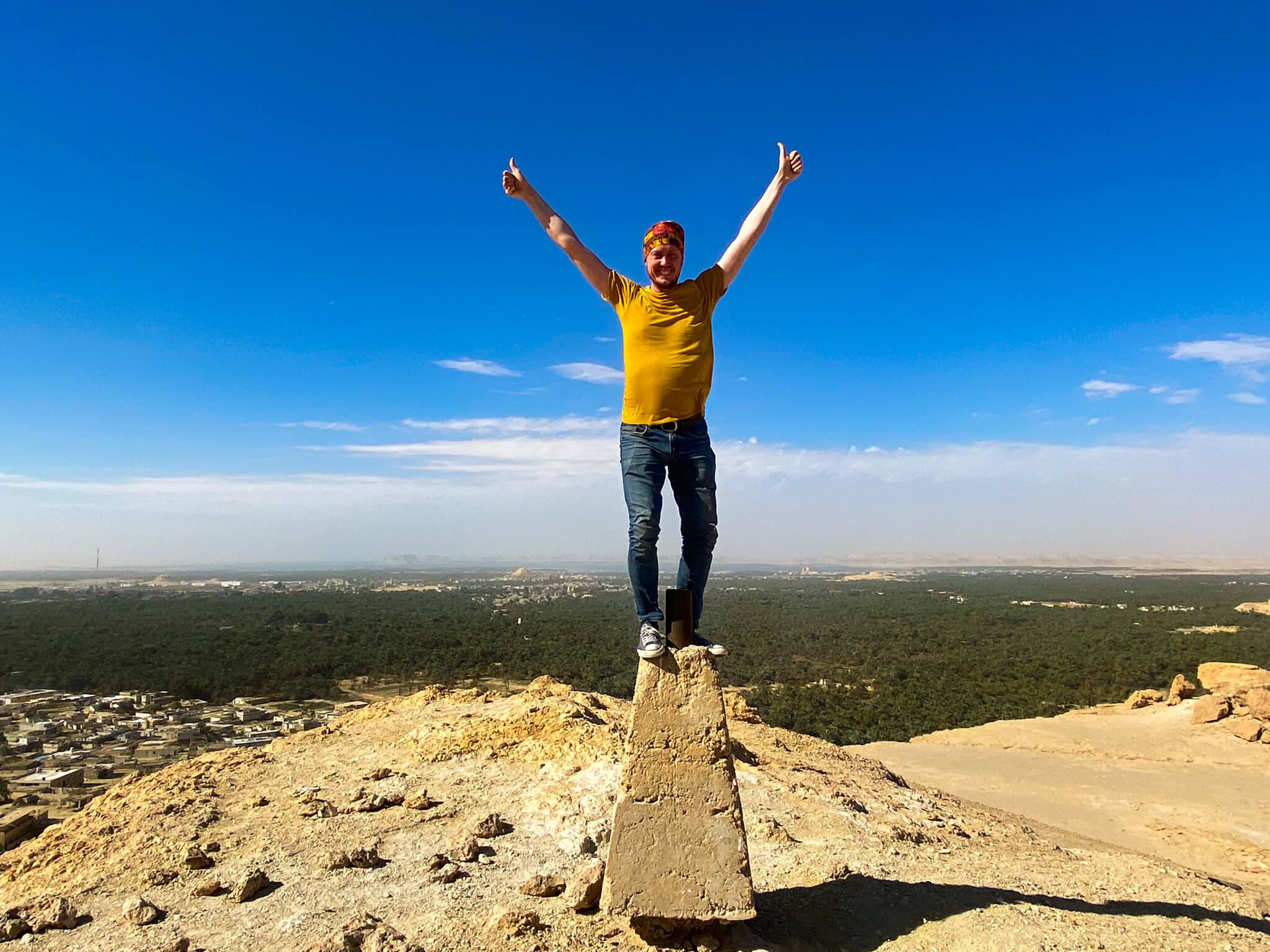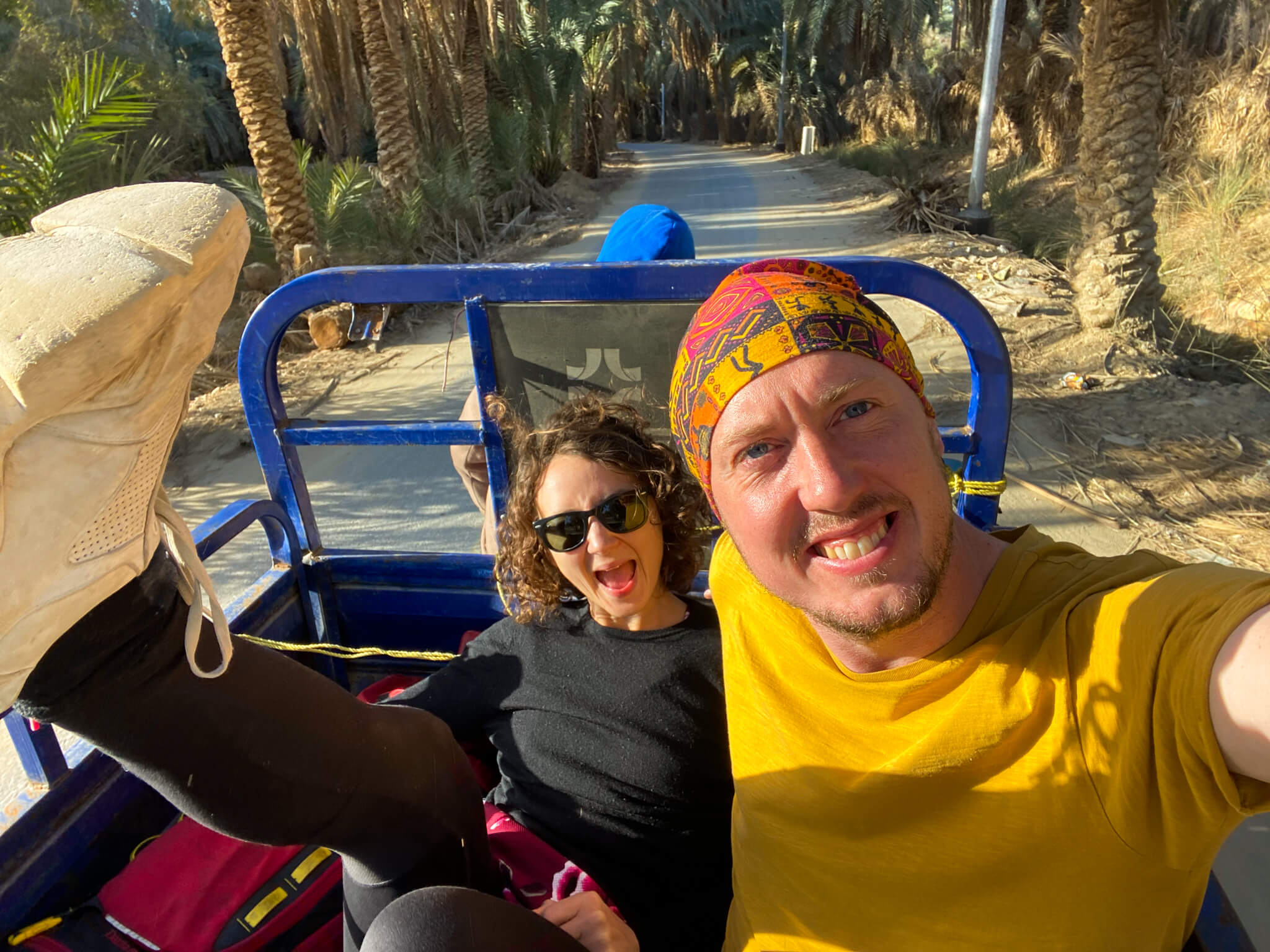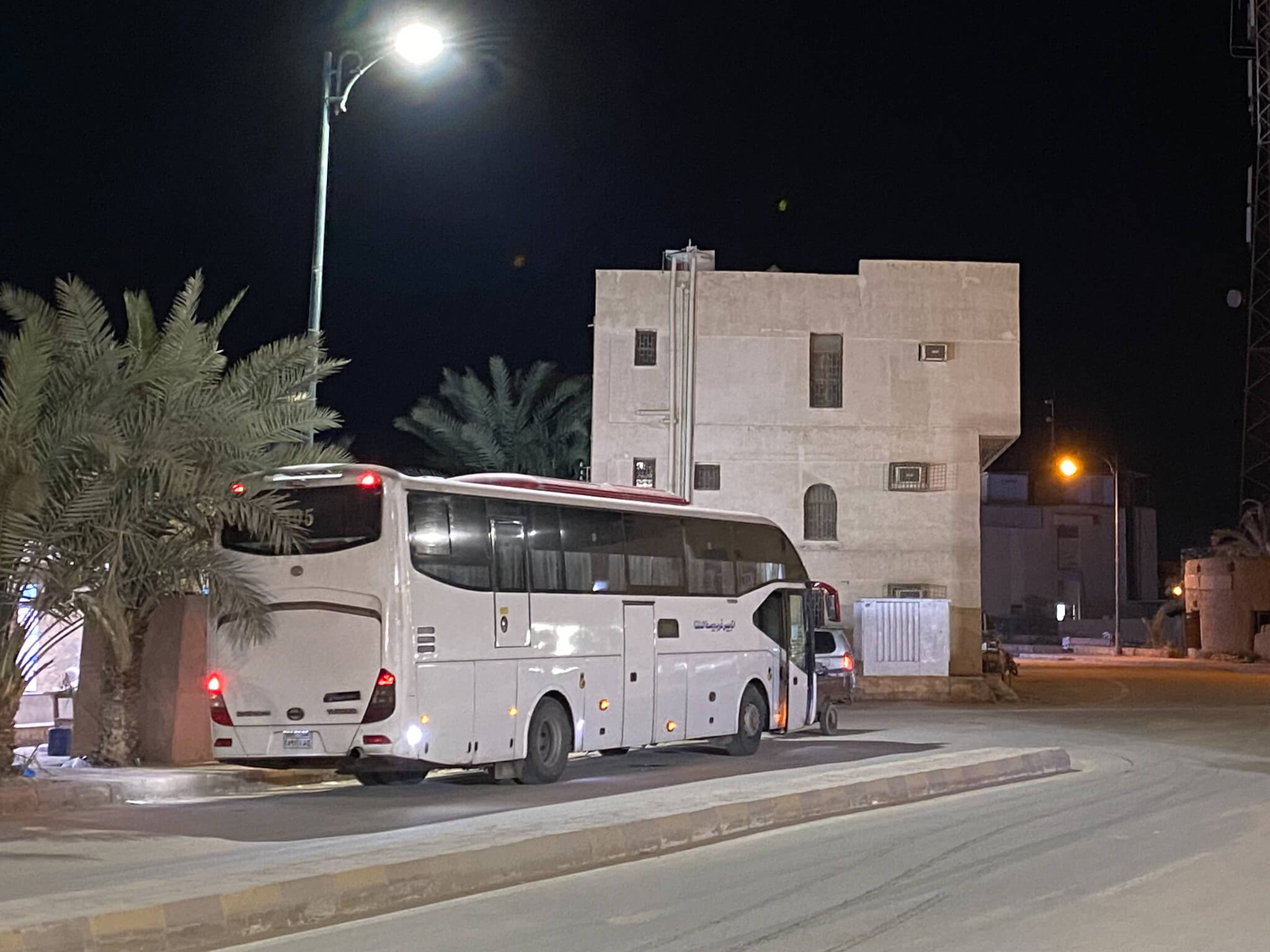Siwa Oasis Travel Guide
How to Visit Egypt's Beautiful Oasis TownSiwa Oasis Travel Guide
Last Updated: 24 Feb 2023.
The Siwa Oasis is a hidden gem of Egypt. I only visited it because various people I met up and down the Nile recommended it, but I’m so glad I did. With less tourists than the rest of Egypt, it’s the perfect place to chill in a laid back atmosphere and explore a multitude of off-the-beaten-track attractions.
Note: Some prices are in US dollars to ensure they stay current given the high rate of inflation in Egypt. Expect to pay approximately the equivalent amount in EGP at the current exchange rate.
Why Visit the Siwa Oasis?
Siwa doesn’t have the big draws of the pharaonic civilization – there are no mummies, few hieroglyphics and no huge temple complexes. But this is also partly what gives it its charm. Siwa is a pleasant oasis of lakes and palm trees in the middle of the desert just 50km from the Libyan border (but don’t worry, it’s totally safe). It’s a great place to chill and take time out after the hustle and bustle of Luxor and the dirty sprawl that is Cairo.

Several kilometres of perfectly straight road connect the town of Siwa with the salt plains. Perfect for the causal cyclist.
Top Sights of the Siwa Oasis
The amount of things to see and do in this little oasis in the desert blew me away. These are the star attractions:
Wonder the Streets of the Shali Fortress – At the centre of the modern town, you’ll find a sprawling maze of alleyways winding between the mud walls of ancient buildings. This is the Shali Fortress – the old town of Siwa. Many of them are now uninhabited, but some are still lived in to this day and a few have been extensively renovated. Look out for the mosque with the beautiful mud minaret near the centre of the old town. Entry is free.
Climb the Hill Behind the Shali Fortress – Just behind the old town is a rocky hill that looks unscalable from most angles due to its many vertical sections. However, climbing it is actually quite easy and the views from the top are more than worth the effort. From the old town, head around the left side of the hill and you’ll find a path to easily ascend to the plateau just below the top. From here, walk around the hill in either direction and you’ll find another path leading to the summit.

The entrance to the Shali fortress. Everything is made of mud.

The recently renovated mud minaret of the Shali Fortress.

Climb the hill behind the Shali Fortress for amazing views.
Soak in the Warm Waters of the Almaza Hotspring – I was in Siwa in January and it was really cold, so soaking in this beautiful hot spring was the perfect way to warm up. There is a lot of misinformation about the hotsprings online, but according to locals, Almaza is the hottest, as it’s next to where the water actually comes out of the ground.
The Almaza hotspring stays open late and one of the best times to go is in the evening. It’s a great way to relax after a busy day. They also serve drinks (no alcohol) and food here. Apparently, there is a $4 entrance fee, but we were never charged, possibly because we turned up independently instead of arriving on a bus full of tourists. In the early evening, it can get very busy, due to the tour buses. We arrived about 10:30pm, when most were leaving and it was really tranquil.
Explore the Salt Plains and Lakes – To the east of Siwa, you’ll find the salt plains and lakes. The lakes take the form of small pools of extremely saline water where you can float like a cork (if you’ve ever visited the Dead Sea, this is similar). There’s also an industrial salt production operation, with mountains of salt piled high, which is fun to explore.
The area makes a great bicycle trip from the town, as you cycle several kilometres along a perfectly straight man-made road through the middle of a beautiful lake. There’s even a cute little cafe halfway along the road to stop for a break, perched on a little island just off the road. At sunset, while we were cycling back, the whole lake turned a soft pink colour. It was a beautiful end to a beautiful afternoon.

The salt pools of Siwa are beautiful, but a bit cold in winter.

The salt lakes are man-made, but still beautiful.

Industrial-scale salt mountains.

At sunset the sky and the lake turned a brilliant pink. On the islands to the right is a little café in the centre of the lake – perfect for the weary cyclist.

Homeward bound (or on to the next adventure).
Hike Dakrur Mountain – Dakrur mountain is a bit like a giant version of the mountain in the centre of town. It’s steeper, but not overly difficult to climb and again well worth it for the beautiful views from the top.
The easiest route is to walk up between the two peaks from the eastern side. From there, there’s an easy path to the summit of the southern peak on the western side of the mountain. To climb the northern peak, follow the small path around its eastern side and you’ll eventually find a path that will take you up to the summit from the northern side of the mountain.
Explore the Temple of the Oracle – A small ruined temple and one of the few examples of ancient Egyptian artwork similar to the Nile region in Siwa. The temple is marked as the Temple of Umm Ubayd on Google Maps. Not that spectacular, but worth checking out if you’re in the area.
Explore the Temple of Amun – A large temple complex on a hill on a hilltop with views over the surrounding countryside. This temple is made of a mixture of stone and mud and some parts have been renovated.
Hike the Mountain of the Dead – Otherwise known as Gabal al-Mawta, the mountain of the dead affords beautiful views over the surrounding area with the added bonus of tombs to explore.

Maybe I got a little too excited to have reached the top of Dakrur Mountain!

The colourful rock formations of Dakrur Mountain.

The Temple of the Oracle has some interesting Egyptian artwork.

Another hill another beautiful view.
Watch the Sunset from Fatnas Island – This is a lovely spot to watch the sun set over Siwa lake. Don’t think that you’ll be alone, however – every tourist in Siwa descends on this spot at sunset to admire the view. Consequently, the best viewing points are occupied by outdoor cafes that provide comfy seating on the lake’s edge and serve drinks (no alcohol). We had a couple of beers we’d brought in from Cairo, so found a spot just outside the cafes to enjoy them.
Visit Cleopatra’s Spring – You can theoretically swim in this spring, as some local boys were doing when we were there, but it’s an ugly concrete pool with trash floating on it surrounded by overpriced tourist shops. I wouldn’t bother.

The sunsets on Fatnas Island are to die for.

Cleopatra’s Dirty Pool
The Best Restaurants in Siwa
There are roughly two types of restaurants in Siwa – those that are targeted at foreign tourists and those that are targeted at locals. The ones targeted at foreigners are, as expected, generally more expensive, but often have a range of more exotic dishes that locals don’t eat on a day-to-day basis. On the other hand, you can’t beat sitting on the floor in a good local restaurant enjoying delicious everyday Egyptian cuisine followed by sweet tea, all at knock-down prices.
For local restaurants especially, go and explore – there are many surprises hidden in plain sight through the streets of Siwa. However, I would particularly recommend these restaurants:
- Restaurant with unknown name – the sign was completely in Arabic, so I have no idea what this restaurant is actually called, but you can find it here: https://goo.gl/maps/mrzmECnLiHXZ4ptD6. The food was delicious, including several dishes (see photo below) and half a grilled chicken that I was so hungry I forgot to photograph when it arrived. We were the only foreigners in the place (and Anna was the only female), but the staff were super friendly and one of them spoke basic English. Afterwards, we had sweet Egyptian tea. It cost just $4.50 for the two of us.
- Ola Restaurant – typical tourist place, but very chill atmosphere with a beautiful courtyard. If you’re feeling adventurous, try the Siwan camel stew. It’s delicious (but very heavy). Average cost of a meal for two people is around $13.
- Abdu Restaurant – another tourist place, this one has a good selection of Egyptian and Siwan dishes. It’s also very popular and gets really busy. Average cost of a meal for two people is around $13.

Eating Egyptian style at the most local of local restaurants.

Be sure to try camel cooked Siwa style (at Ola restaurant).

These flatbreads come stuffed with any number of different fillings – even chocolate! At Abdu Restaurant.
Accommodation in Siwa
There’s a large range of accommodation options in and around the Siwa Oasis, so check out the usual sites. We stayed at the following:
- Qasr El Salem Hotel – decent budget hotel with a swimming pool (which it was far too cold to use in January). They have a choice of older rooms (around $27 per night) in the main building or newer more luxurious ones next to the pool (around $35) and a decent breakfast is included. Prices may be higher during peak seasons.
- Hidigda Camp – basic but charming hut with a mattress and a shared bathroom for around $16. Includes one of the best breakfasts we had in Egypt. The real highlight of this place is that it’s just two minutes walk from the entrance to the Almaza hot springs. However, it’s several kilometres from the centre of town.

The grass huts at Hidigda Camp are basic but comfortable (and they provided unlimited blankets in winter!)

Egyptian breakfasts are generally delicious and include many different dishes (at Hidigda Camp).
Getting Around Siwa
The Siwa Oasis’ myriad attractions are spread out over a wide area comprising a number of villages, mountains, lakes and millions of date palms. It’s too big for most people to walk comfortably, so your options are the following:
- Bicycle: Siwa is the perfect size for pedalling around and it’s practically flat, so quite easy going on a bike. This was our primary means of transportation for the first two days. Prices started on the high side, at $5.50 per bike per day, but we managed to bargain them down to $11 for two bikes for two days. This was the same price as we paid in Luxor, although surprisingly the bargaining was easier there than here.
- Hitchhiking: Often, even if you’re not looking to hitchhike, friendly locals will stop and offer you a lift if they see you walking. We did this once, riding in the tray of a three-wheeled motorbike cart and the driver went out of his way to drop us in the town centre. After we got off, he grinned, waved and drove off without the slightest suggestion of asking for money.
- Tuk tuk: these are ubiquitous throughout Siwa and you’ll easily find someone who’s happy to take you to your destination for a few bucks.
- Tour or private car and driver: These can easily be arranged at the various agents in the town centre or through your hotel.

Hitchhiking Siwa style!
Getting There and Away
There is a daily bus from Cairo at 10pm every day, departing from the West and Middle Delta Bus Company ticket booth located on the spaghetti junction behind the Egyptian Museum, five minutes walk from Tahrir Square (Google Maps location: https://goo.gl/maps/Yq5Zrz5rNYn9Wfjg9). The ticket costs $16.50 one way and the journey takes 9 hours, arriving in Siwa about 7am the next day.
The bus will stop at a couple of checkpoints along the way. The (usually very friendly) soldiers check everyone’s documents (passports for foreigners) and sometimes make everyone get off the bus to check their bags. In my case, they found the four cans of beer I’d bought in Cairo and asked “where’re your documents?” I played dumb and they said “beer passport!” I almost cracked up laughing. At that point, a local who spoke better English stepped in to help and explained that they wanted to see the receipt, which I didn’t have. The soldier just put them back in the bag and let me take them on to Siwa anyway!
The bus times for the return journey to Cairo can vary, as it depends how busy they are. When I was there, they’d added an extra bus due to high demand, so there was a 18:30 service and a 19:30 service. Either way, it seems they all depart in the evening and run overnight. Just ask for the times at the bus station ticket counter.
There are no scheduled flights to Siwa and no railway line, so your only other options are a rental car or to hire a car and driver.

The buses to Siwa are relatively expensive, but modern and comfortable.
Alcohol (or Lack of) in Siwa
Alcohol is not sold anywhere in Siwa (at least, not openly). You can bring it in, but keep your receipt, as they may ask for it at checkpoints (see section Getting There and Away). You can easily buy alcohol in Cairo, the most popular place being a chain of bottle shops called Drinkies. There’s one conveniently located five minutes walk from the bus stop on Mahmoud Bassiouny Street (Google Maps location: https://goo.gl/maps/MuqMV4ERa8D8Zvbr6).

The most popular beer in Egypt is Stella, but not as we know it. I enjoyed these smuggled cans while floating in the salt pools.
More about Egypt
I’ve spent a total of about a month in Egypt on four separate trips, so I’ve seen a large part of the country. The major draw is, of course, its incredible history and amazing cultural sites, but it’s also a great place to chill out. For more travel tips and off-the-beaten track ideas, check out my other articles on Egypt:
Alexandria Travel Guide: Where to Go and What to See
Alexandria - Egypt's Mediterranean Gem Last Updated: 25 Feb 2023. Like a miniature and more-manageable version of Cairo on the Mediterranean coast, Alexandria is sadly overlooked by many travellers to Egypt. The city has a wonderful mix of historic sites, crumbling...
Aswan Travel Guide: The Best Off-the-Beaten-Path Sights
Off-the-Beaten-Path Aswan Last Updated: 25 Feb 2023. Aswan is one of the most touristy cities in Egypt and for good reason. Its relaxed atmosphere, beautiful location on the Nile and the chill Elephantine Island make it the ideal place to hang out for a few days. ...



Hello ! Thank you very much for this articles, full of precious tips. I’m considering going to Egypt on may, and since I’ve heard of Siwa, I jsut can’t stop my mind thinking about it. I’m concerned by the safety situation there, so seeing that your article was written in 2022 is soothing. I was just wandering how to plan it. I know there are operated tours from Cairo but I’d rather go by public transportations, and if there’s a direct bus that go to Siwa it’s perfect. I was wandering if renting a bike there was enought to visit the must see points. The photos of the sunset in the salk lakes are so beautiful by the way 🙂 And thank you for the advice regarding the booze receipt, it sure will be very helpful 🙂
Hi Tania. Glad to hear the article was helpful and I’m sure you’ll love Egypt, it’s a wonderful adventure. Honestly, Siwa is probably the safest place in Egypt – it has a real sleepy village vibe. You can easily travel with the direct bus from Cairo, no need for a tour. Whether bicycles are enough for getting to all the sights really depends on your level of fitness. Almost everything is within a 5km radius of the centre of town, and its pretty flat (although some roads are quite rough). The exception is the salt lakes, which are around 10km away. It’s a beautiful ride though. If you do decide you want to hire a tuk tuk or other transport to get around once you’re there, your hotel will be able to sort you out anyway. Enjoy Egypt!
hello Rowan, found your blog very helpful. I am planning a trip to siwa on 3rd may – and wondering if its safe for female solo travellers? the conducted tours for siwa from the likes of memphis is eyewateringly expensive.
Hi Debjani. Siwa is safer than most places in Egypt for female travellers. I travelled all around Egypt with a female friend and we had a few minor issues with creepy guys in the big cities, but no problems at all in Siwa. The area is quite rural and people are more innocent there. So I would suggest to skip the expensive tours and go solo, it’s safe.
You are welcome to Siwa oasis Egypt
If you need help just be in touch
I’m native from Siwa
Hi,
Thank you for your blog. My friend lives in Siwa and assures me it’s safe. However, all of the US travel alerts say not to go within 50km of the Libyan border where Siwa is… Are you American? Were the same travel recommendations in place last January when you were there?
My friend would transport me to and from Cairo.
Hi Laura. Your friend is right, Siwa is very safe. Government travel warnings often exaggerate and 50km from the border is a general rule. There are probably areas near the border that aren’t safe, so it would make sense in some places, but Siwa is fine.
Thank you for the reassurance! This place appears magical and I hope not to miss it.
I’m a parent now so I’m more cautious than I used to be!
I’m sure being a parent changes your perspective a bit, but don’t worry, it’s very safe and I’m sure you’ll love it!
Great to read. I went in augstus 1990, good that some things changed for the good and that the atmosphere is still amazing.
Glad you enjoyed the read. Must’ve been amazing to see Egypt back then, I imagine it was far less overrun by tourists than it is these days.
Great review of Siwa – I was there in 1998 and I still remember it fondly as one of the most amazing places I’ve been to in the world. I must go back again!
Glad you have such great memories of Siwa. I guess it’s changed a lot since 1998!
Great info, thanks for sharing. I wanted to ask if you had any info on the buses to leave Siwa that go to Marsa Matrouh? I am making my way to Siwa from Cairo, but haven’t found any info on bus service or schedule leaving Siwa outside of going back to Cairo, which I plan to go to Marsa Matrouh then to Alexandria. Any help would be much appreciated.
Hi Liz. Glad to hear the article was helpful. Apologies for the late reply – I hope this reaches you in time! I heard that there are informal minibuses that run multiple times a day between Siwa and Marsa Matrouh. I don’t know timings though (I expect they just leave when full). I would suggest you ask around after arriving in Siwa.
Hello Rowan. Thanks a lot for your beautiful photos and inspiring information. I am curious if you have visited Tunis Village and Fayoum ? I am torn between Fayoum and Siwa for my next egyptian trip.
Hello Anthony. I haven’t been to Fayoum actually. I did a quick Google and it looks beautiful, plus it’s a lot closer to Cairo, so I suppose it depends how much time you have. You wouldn’t be disappointed by Siwa though. Enjoy the trip, whichever you choose.
Hey Rowan, thanks for the amazing tips! Reading your blog convinced me to head out for siwa this weekend! So i have two quick questions.
First, do you know if the bus company allows you to take your own bike with you?
And second, how much time would you recommend there? I’m deciding between staying 3 nights vs 4. Would it possibly get boring?
Thanks in advance!
Hey Farah. Great to hear the blog inspired you to visit Siwa. It’s a wonderful place. I’m not sure about the bike, but as I remember, the bus had plenty of luggage space, so they might well take it. Regarding the length of trip, three nights is sufficient for the highlights. However, if you’re into cycling, I’m sure you’d find other places to visit on the extra day, so I don’t think it would be boring. It depends largely on your style of travel. Enjoy Siwa!
Hi Rowan! Super useful blog, thank you! I’m planning to go to Siwa in early November, did you need a permit to go to Siwa? I have read in different sources that foreigners used to be obliged to issue a travel permit to visit Siwa, is that still in place? Many thanks in advance!
Hi Kasia. Apologies for the late reply. No permit is required for Siwa. I think that information is out-of-date.
Hi Rowan,
I am planning to go to Siwa next week with my friends. We are all from Germany.
May I ask if you need to apply for a permit to cross the dessert road ro Siwa? Because I heard that some polices are checking the permit.
Which bus company did you buy the ticket?
Regards,
Danh
Hi Daniel. I guess this is a bit late now, but hope you’re enjoying Egypt. A permit is not required to visit Siwa. As mentioned in the article, the bus company is West and Middle Delta Bus Company.
I don’t understand travelers that try to stay within the budget of local people, saying some things are expensive because you paid more than the average person. In general if it is cheaper than home anyway by a significant amount. It does not matter if I am paying more than the guy who lives down the road.
Expensive to hire bikes at £2 a day over there is it. Where I live it is £1.65 per 30 minutes. So that is £79.20 per day, i.e 2888egp p.
So yes, I would just see what the conversion is on my phone or have it written down and if it always works out cheaper than home. I will just pay it, no bartering required.
I go home to a 2,000,000 EGP a year job.
In most countries like that their minimum wage is not enough for person to live alone like it is here and be able to afford all their bills and eat. Especially when they dont even make minimum wage as they are self employed relying on the 30 nearby residents to buy carpets.
So just pay more, pay what they ask, feed a family, share your wealth with other nations.
I’m sure travellers that bargain don’t understand you either. That’s fine, everyone has their own way of travelling 🙂